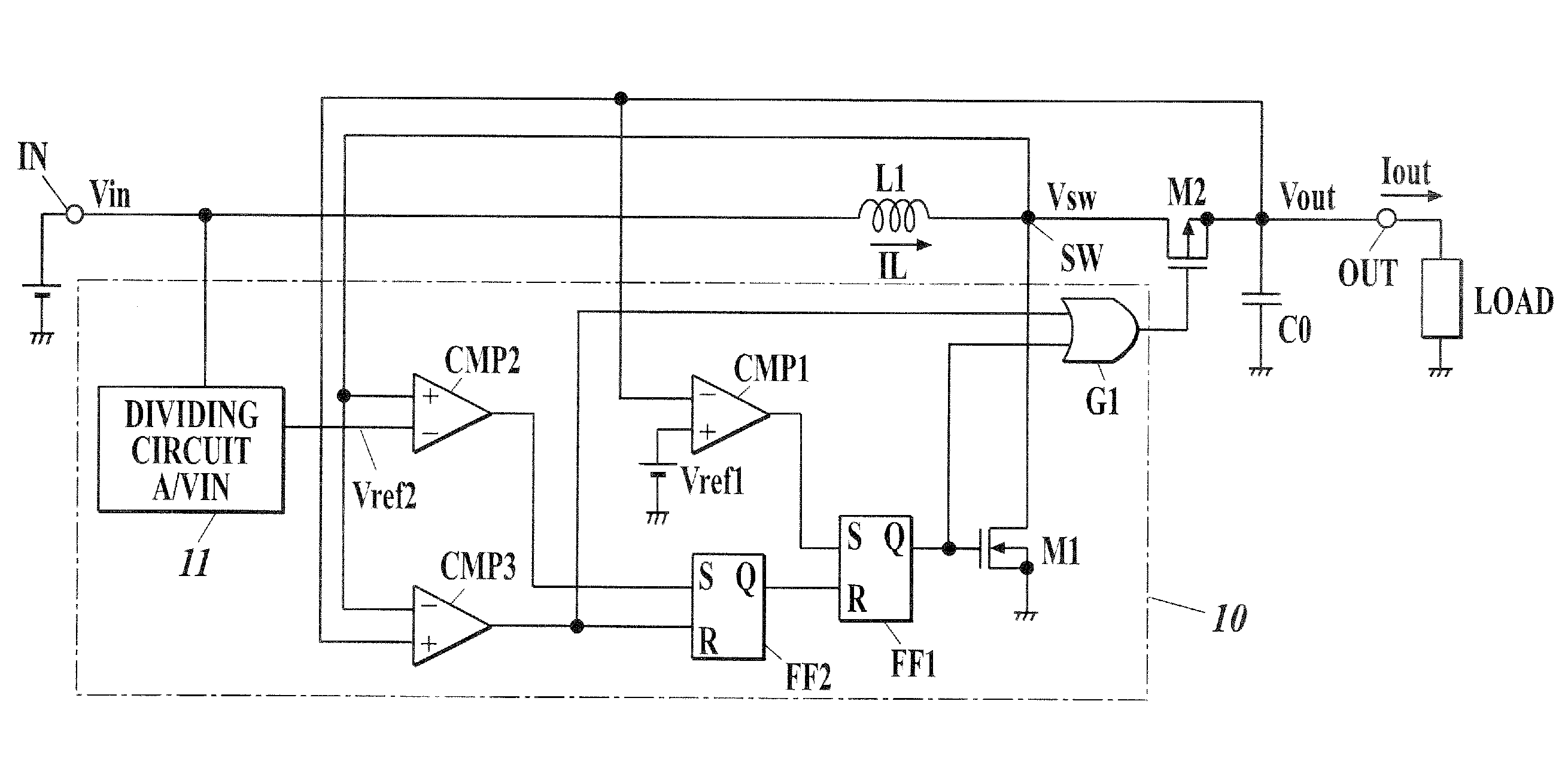Step-up dc-dc converter
a dc-dc converter and step-up technology, applied in the field of step-up dc-dc converters, can solve the problems of inability to simply reduce the imax irrespective, inability to simply reduce the imax, so as to prevent humming or malfunction, reduce the ripple voltage of outpu
- Summary
- Abstract
- Description
- Claims
- Application Information
AI Technical Summary
Benefits of technology
Problems solved by technology
Method used
Image
Examples
Embodiment Construction
[0022]Preferred embodiments of the present invention will be explained below, referring to the attached drawings.
[0023]FIG. 1 is a drawing illustrating one embodiment of the step-up DC-DC converter, based on the PFM (pulse frequency modulation) system for output control, of the present invention.
[0024]The DC-DC converter of this embodiment has a coil L1, a drive switching element M1, a rectifying switching element M2, a switching control circuit 10, and an output smoothing capacitor C0. The coil L1 is an inductor having one terminal thereof connected to an voltage input terminal IN through which DC input voltage Vin is applied. The drive switching element M1 is connected between the other terminal of the coil L1 and a grounding point. An N-channel MOSFET (insulated-gate field effect transistor) may be used as the drive switching element M1. The rectifying switching element M2 is connected between a connection node (terminal SW) of the coil L1 and the switching element M1, and an out...
PUM
 Login to View More
Login to View More Abstract
Description
Claims
Application Information
 Login to View More
Login to View More - R&D
- Intellectual Property
- Life Sciences
- Materials
- Tech Scout
- Unparalleled Data Quality
- Higher Quality Content
- 60% Fewer Hallucinations
Browse by: Latest US Patents, China's latest patents, Technical Efficacy Thesaurus, Application Domain, Technology Topic, Popular Technical Reports.
© 2025 PatSnap. All rights reserved.Legal|Privacy policy|Modern Slavery Act Transparency Statement|Sitemap|About US| Contact US: help@patsnap.com



